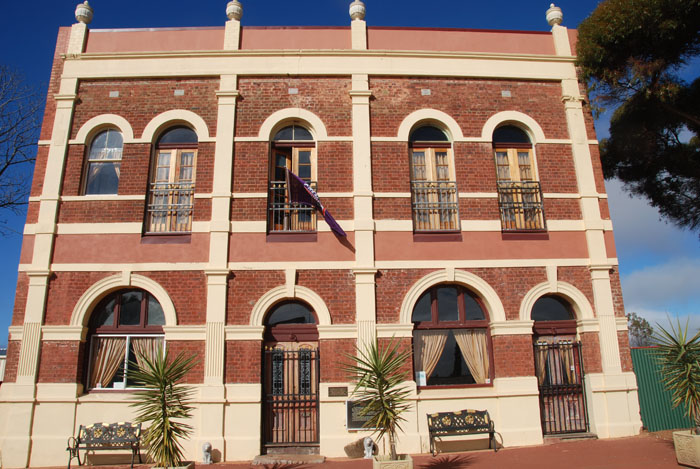Born from a Gold Rush
Coolgardie burst into existence in 1892 after Bayley and Ford found gold at Fly Flat. Less than a year later it was declared a town and by 1898 it had a population of more than 15,000, making it the largest town to spring up during the gold rush and, at the time, the third largest centre of population after Perth and Fremantle. At its peak, 700 mining companies based in Coolgardie were registered with the London Stock Exchange.
The gold eventually ran out and Coolgardie became a ‘ghost town’ but with a population of approximately 700. Renewed interest in mining in the 1980s and 1990s saw a revival of the town.
- Coolgardie Hotel
Naming of the town
Coolgardie is said to be an aboriginal name for ‘rockhole surrounded by mulga trees’. An alternative derivation is that the waterhole was named after the large lizard known as the bungarra and pronounced by the aborigines as ‘Coorgardie’.
The main street was made extremely wide to allow camel trains to turn (camels having difficulty in walking backwards).
The town has two cemeteries, Coolgardie Pioneer Cemetery (in use for only two years) and Coolgardie Cemetery (often erroneously thought to be the Pioneer Cemetery).
C.C. Hunt (1832-1868)
Interestingly, explorer/surveyor C.C. Hunt walked across Fly Flat during his expeditions to the Hampton Plains in the 1860s but his eyes were cast forward searching for water and pastoral land, and a way through to South Australia, not downward searching for gold.
The reports of the various trips, tours and travels on the Adventures website have a lot of information about place names – their naming and features – toponymy. More information.
© Kim Epton 2019-2024
310 words, one photograph.
Feel free to use any part of this document but please do the right thing and give attribution to adventures.net.au. It will enhance the SEO of your website/blog and Adventures.
See Terms of Use.






